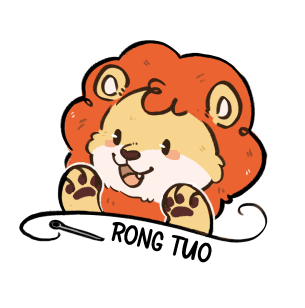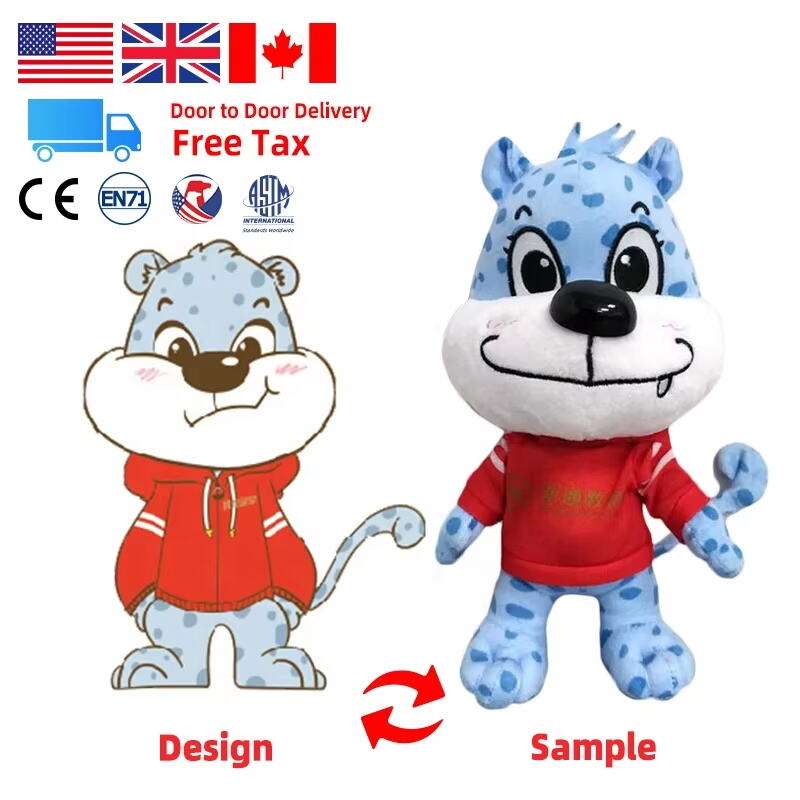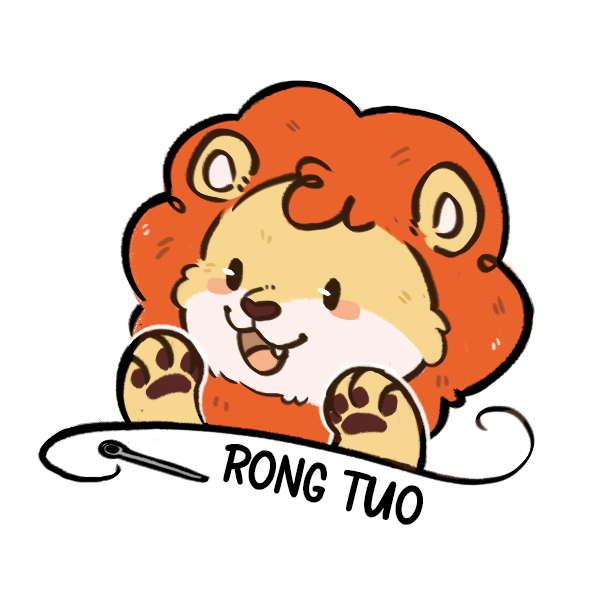Introduction to Sampling Costs in Plush Toy Production
Sampling costs are a crucial portion of the expenses in plush toy production, occurring before mass manufacturing. These costs encompass creating prototype plush toys, which are necessary for evaluating design aesthetics and quality standards. The process also includes testing for durability and compliance with safety regulations. This step is essential for producing custom plush toys that meet market and consumer expectations, offering insights into potential improvements before final production begins.
Moreover, sampling plays a vital role in ensuring quality and customer satisfaction. High-quality samples allow manufacturers to assess the visual and tactile appeal of the toy, ensure compliance with industry standards, and avoid future production issues. For plush toy companies and stuffed animal suppliers, these preliminary steps are indispensable in verifying that their Products will not only attract the target audience but also meet safety requirements. This meticulous approach is why sampling costs can be significant, as they set the foundation for successful mass production and market acceptance of plush toys.
Complexity of Design and Its Impact on Sampling Costs
Detailed Designs and Customizations
Intricate designs and customizations in plush toys can drastically increase sampling costs. The complexity involved in creating detailed samples, especially those requiring advanced techniques and various fabric patterns, often multiplies expenses significantly. For instance, while a standard plush toy might be sampled quickly and cost-efficiently, those requiring bespoke features such as personalized embroidery demand more time and specialized labor. This can elevate costs notably. Statistics from plush toy companies reveal that sampling custom plush toys may incur costs up to 30% higher than simpler designs, emphasizing the financial impact of detailed customization.
Unique Features and Their Cost Implications
Incorporating unique features such as interactive elements, special materials, or custom packaging adds layers of complexity and increases sampling costs. Thorough testing is essential to ensure the functionality and safety of such features, thereby necessitating more expensive prototype development. For example, plush toys incorporating sound elements or LED lights require intricate design and engineering, thus elevating the time and costs involved in sample production. This complexity highlights the importance of careful planning when aiming to develop custom plush toys from a picture, as overlooked elements can significantly inflate sampling expenses.
Material Selection and Its Role in High Sampling Costs
High-quality Fabrics and Stuffing
The selection of high-quality fabrics and stuffing is a pivotal factor in determining the sampling costs of plush toys. These premium materials not only elevate the toy's aesthetic and tactile appeal but also substantially hike up the overall sampling expenses. Generally, quality materials are significantly more expensive, directly impacting the cost of producing initial samples. Additionally, with the industry shifting towards more sustainable practices, many plush toy companies are emphasizing the use of eco-friendly materials. This can include organic cotton or recycled polyester, complying with stringent safety standards, which on average results in a 20% increase in material costs. As companies aim to appeal to eco-conscious consumers, the costs associated with high-quality, sustainable plush toy materials continue to rise.
Safety Components and Their Expense
Incorporating safety components into plush toy production further escalates sampling costs due to rigorous testing and compliance requirements. Features such as safety eyes, reinforced stitching, and the usage of non-toxic materials necessitate thorough evaluation to meet stringent regulatory standards. These vital components ensure that plush toys are safe for all age groups, especially children. Regulatory bodies impose detailed protocols that mandate extensive documentation and adherence, thereby heightening the sampling costs. Industry research suggests that focusing on safety can increase sampling costs by about 15-25%. For manufacturers committed to high safety standards, these additional expenses are an essential investment to prevent future liability and ensure customer trust.
Prototype Development and Associated Costs
Creating and Testing Prototypes
Developing and testing prototypes is a crucial yet resource-intensive stage in plush toy production. Each prototype requires meticulous construction and multiple iterations of testing to refine the design, which is both time-consuming and costly. This process often necessitates a considerable portion of the manufacturer's budget, sometimes accounting for up to 50% of the overall sampling costs. When multiple iterations are involved, the expenses can further increase as adjustments are made to meet design specifications and customer expectations.
Quality and Safety Checks During Prototyping
Quality and safety checks significantly impact the costs during the prototyping stage. These checks are essential for ensuring that the plush toys comply with safety standards and meet consumer expectations. The procedures require specialized equipment and skilled personnel, leading to increased operational expenses. According to an industry research study, quality assurance measures can drive up sampling costs by about 10-15%. Despite the added cost, these checks are indispensable, considering the intricate demands of sustainability and safety compliance imposed on plush toy manufacturers.
Labor and Expertise in Plush Toy Sampling
Skilled Labor Requirements
Producing plush toys necessitates skilled labor, which substantially elevates sampling costs. This is primarily due to the need for experienced seamstresses, designers, and production staff proficient in handling complex designs and materials. For instance, specialized craftspeople employed in the plush toy sector can increase sampling costs by approximately 20-30%, contingent on the level of expertise required. Engaging professionals proficient in industrial sewing and detailed craftsmanship is imperative, as their skills ensure the plush toy meets high-quality standards, further driving up labor costs.
Expertise in Custom Plush Toy Production
Expertise in custom plush toy production is vital for successful sampling and comes with higher costs due to the necessity of hiring industry specialists. These experts provide the crucial knowledge needed for navigating design intricacies and material selection, directly influencing the efficiency of the sampling process. While the investment in expert personnel results in a higher upfront sampling cost, it often results in better quality production, fewer defects, and ultimately, greater profitability. Hiring such specialists ensures that bespoke stuffed animals are not only aesthetically pleasing but also meet durability and safety standards—an important consideration in the marketplace for "personalized stuffed dogs" or those looking to procure "custom stuffed animals from pictures."
Small Production Runs and Their Effect on Sampling Costs
Economies of Scale in Production
Small production runs in plush toy manufacturing often negate the advantages of economies of scale. In larger production runs, fixed costs such as setup and tooling are distributed over a greater number of units, significantly reducing per-unit costs. Conversely, when the production volume is limited, companies are forced to allocate these fixed costs over fewer products. This inefficiency can lead to sampling costs that are up to 40% higher compared to large batch productions. The disparity arises because smaller runs do not allow for the same level of cost dilution as larger manufacturing processes, directly impacting the budget and pricing strategy of plush toy companies.
Higher Per-Unit Costs in Small Batches
Manufacturers dealing with plush toys often encounter elevated per-unit costs with small batch productions, which ripple through to affect sampling costs. Setup and administrative expenses become proportionally larger when spread across fewer items, inflating the cost per unit. Plush toy companies frequently report that producing smaller runs can increase per-unit costs by as much as 50%. This surge is due to the inability to justify bulk discounts from suppliers or achieve material efficiencies that are possible in larger orders. Consequently, sampling costs rise, as smaller orders fail to capitalize on economies of scale, pushing production expenses significantly higher.
By understanding these dynamics, plush toy companies and stuffed animal suppliers can better navigate the financial challenges associated with small production runs, ensuring that they strategically manage their sampling costs without compromising on quality.
Conclusion: Summary of Why Plush Toy Sampling is Expensive but Necessary for Quality Assurance
In conclusion, plush toy sampling, while expensive, remains an indispensable investment in ensuring quality assurance, safety, and customer satisfaction. Several factors, including complex designs, specialized materials, and skilled labor, substantially contribute to the high costs involved in sampling processes. Each stage in creating a plush toy, from design and pattern-making to material selection and manufacturing, plays a critical role in shaping the final product's quality and safety standards. Despite significant expenses, prototyping is crucial for manufacturers aiming to meet and exceed consumer expectations.
Ultimately, investing in comprehensive sampling processes is vital for plush toy manufacturers committed to delivering products that adhere to stringent safety regulations. By rigorously testing samples before full-scale production, companies can identify flaws early, ensuring they align with consumer expectations and market demands. This strategic investment not only safeguards brand reputation but also enhances customer loyalty, positioning plush toy businesses for long-term success.
FAQ
Why are sampling costs significant in plush toy production?
Sampling costs are significant because they involve prototype creation, durability testing, and safety compliance, which are essential for ensuring quality and customer satisfaction in plush toys.
How do detailed designs impact sampling costs?
Detailed designs increase sampling costs due to the complexity and specialized labor required, often raising costs by up to 30% compared to simpler designs.
What materials increase the cost of sampling plush toys?
High-quality fabrics, eco-friendly materials, and safety components significantly increase sampling costs due to their premium prices and the need for rigorous testing.
Why is prototype development resource-intensive in plush toy production?
Prototype development is resource-intensive due to the meticulous construction, multiple testing iterations, and the need for quality and safety checks, which can account for up to 50% of overall sampling costs.
How do small production runs affect per-unit costs?
Small production runs result in higher per-unit costs because fixed expenses are spread over fewer units, lacking the cost dilution benefits of larger production scales.
Table of Contents
- Introduction to Sampling Costs in Plush Toy Production
- Complexity of Design and Its Impact on Sampling Costs
- Material Selection and Its Role in High Sampling Costs
- Prototype Development and Associated Costs
- Labor and Expertise in Plush Toy Sampling
- Small Production Runs and Their Effect on Sampling Costs
- Conclusion: Summary of Why Plush Toy Sampling is Expensive but Necessary for Quality Assurance
- FAQ


